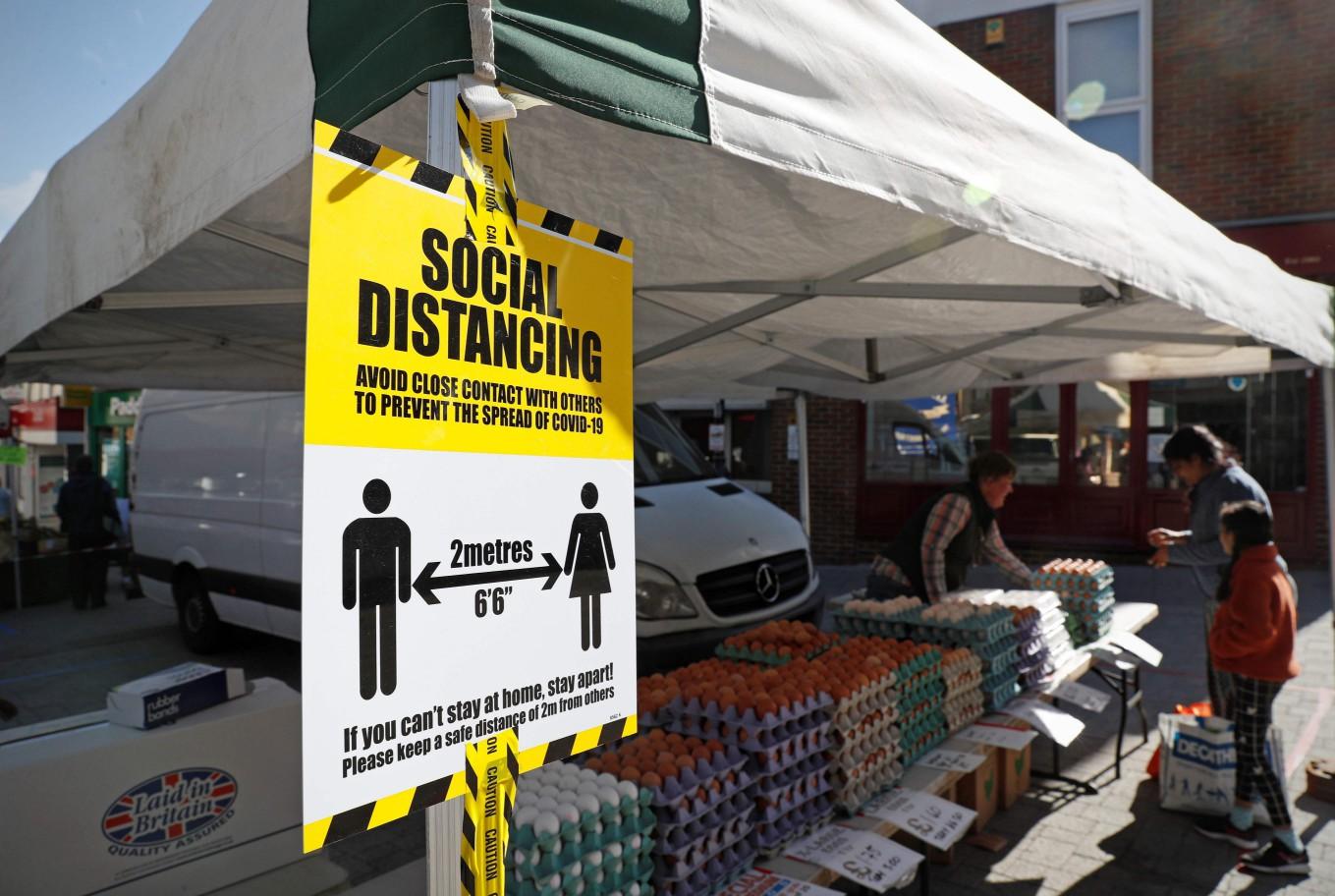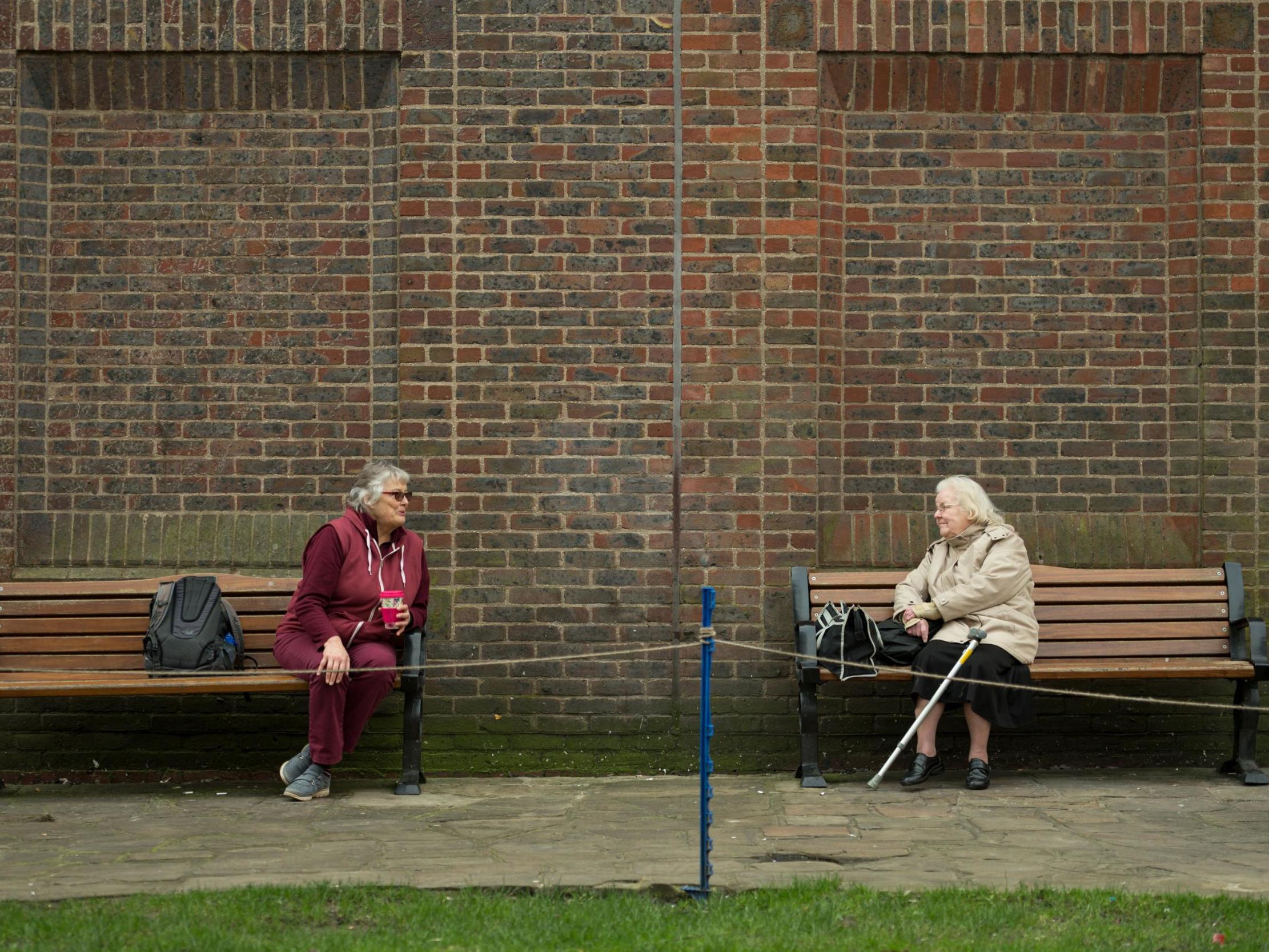Social distancing: The science behind reducing from two metres to one metre
New review concludes that the two-metre rule in place since March can be reduced to one metre

Boris Johnson has announced that a review of social distancing has concluded that the two-metre rule in place since March can be reduced to one metre – something which was regarded as essential by the hospitality industry for venues to be financially viable.
The prime minister also confirmed that pubs, restaurants and hotels can start reopening in 11 days’ time on 4 July.The news comes after the hospitality industry said that enforcing the two-metre rule would make it difficult for everything to reopen.
UK Hospitality estimated that establishments would previously only have beeen able to achieve 30 per cent of normal revenues with a two-metre rule in place, whereas now this has been lessened to one metre, 60-75 per cent of revenues will be possible.
But is it safe to reduce the social distancing rule by this much? The Independent takes a look at the science.
Do all countries have a two-metre social distancing rule?
No. While Canada, Spain and the UK previously imposed the most generous social distancing space of two metres, most other countries have gone for either 1.5 metres – Australia, Belgium, Germany, Greece, Italy, Netherlands and Portugal – or one metre – China, Denmark, France, Hong Kong, Lithuania and Singapore.
The US and South Korea have decided to march to the beat of their own drums, implementing social distancing guidelines of 1.8 and 1.4 metres respectively.
The World Health Organisation (WHO) advice stipulates a distance of one metre between people.
Have the countries with two-metre rules seen lower infection rates?
It doesn’t look like it: factors such as earlier lockdown and comprehensive track and trace programmes seem to have played a much bigger part in determining a country’s infection rate.
For example Denmark, which has a one-metre social distancing policy, currently has death toll of over 600 in total. Having gone early into lockdown and the first country outside Asia to ease its restrictions, Denmark said contagion had not accelerated since measures were relaxed.
Meanwhile the UK, which had a two-metre rule, currently has the third highest death rate in the world, behind the US and Brazil, with more than 40,000 deaths.
Is staying two metres away safer than one metre?
There is still much we don’t know about coronavirus and how it travels and spreads.
Dr Jenna Macciochi, author of Immunity: The Science of Staying Well, tells The Independent: “It would be great if we had very specific data to follow but there aren’t, so it’s hard to say.
“Initially the two-metre rule was based on studies from several decades ago looking at other viral infections and it has become a mainstay of preventing viral transmission. This is helpful to minimise droplet spread as the droplets containing viral particles are likely to fall to the ground before two metres.
“But we need to remember that two metres was brought in as a rule for viruses in general, not specifically SARSCoV2. This pandemic has evolved, and so has our knowledge and understanding.”
She cites a study published in medical journal The Lancet that suggests keeping a one-metre distance could be sufficient.
“It doesn’t mean that one metre suddenly elevates risk,” she adds.
However, the same study suggested that, while the risk of being infected by another person is around 13 per cent when you stay one metre apart, it drops to just 3 per cent beyond that distance.
Dr Michael Head, senior research fellow in Global Health at the University of Southampton, says: “In terms of social distancing, we know that staying apart by one metre is useful, but that two metres is better.
“Really, the more distance the better, but two metres has been considered to be practical in most circumstances and is known to be effective.”
What about indoors versus outdoors?
“The infection seems to be more easily spread indoors than outdoors,” says Dr Macciochi. “Also things like air quality, humidity, weather and air conditioning may be playing a role.”
A study by Japan’s National Institute of Infectious Diseaeses found that the chances of transmitting the virus were 19 times higher indoors than outside after looking at 110 cases of Covid-19 and tracing the contacts of those infected.
Does it matter how long I spend with someone?
One of the most important and often overlooked factors in the risk of transmission is the amount of time spent with someone.
According to Dr Macciochi, broadly speaking, successful infection = exposure to virus x time.

First coined by Erin Bromage, a comparative immunologist and professor of biology at the University of Massachusetts Dartmouth, this equation essentially means that people get infected when they are exposed to a certain number of viral particles.
If the other person coughs or sneezes, the viral threshold can be reached quite quickly. However, even talking releases some virus particles into the air. The longer you spend with an infected person, especially in an enclosed space, the likelier it is you’ll become infected.
“The longer time you spend in that environment – so minutes or hours in there – the more virus you breathe in, the more it can build up and then establish infection,” Bromage said.
People already seem to break the two-metre rule at the supermarket…
It might be tempting to think that, if you’re passing close by strangers in the local newsagents, that being closer to friends and family shouldn’t be an issue.
However, the rule that requires shoppers to wear a mask reduces the risk, as does the minimal time you spend near others while shopping (see above re: timing).
How far can coronavirus travel?
This, too, is hard to say.
“It is clear that the virus can spread in droplets,” says Dr Rob White, lecturer in Virology at Imperial College London. “These are produced when speaking or coughing or similar. It is not clear whether the virus can spread in aerosols – the sorts of tiny liquid particles produced when simply breathing.”
If the virus can spread via aerosols, it could potentially travel much greater distances.
Travelling via droplets, the virus is likely to spread further through activities such as shouting or singing, according to Dr White, who cited high-profile instances where multiple choir members came down with coronavirus.
However far the droplets travel, they will fall at some point. Then the issue becomes infection via contaminated surfaces, which is why hand washing is so essential.
Will the new reduced social distancing to one metre have an impact on infection rates?
It’s difficult to predict, according Dr Macciochi. “It depends if people adhere to the rules and take into account the time spent and the other important precautions such as hand washing, face masks and good tissue etiquette,” she says.
Dr White argues for more clarity from those leading the pandemic response: “To my mind this whole debate, and guidance to the public, has been terrible in helping people understand high and low risk activity,” he says. “Essentially, in my view it all depends on the activity. Assuming the spread is by droplet only, in silence or back to back we can be very close with no risk of spread, either indoors or outdoors.
“Face to face, if you speak quietly the droplets will travel less far. If you shout or sing, they will travel further and perhaps produce more.”
He says there should be more public discussion about high risk activities for transmission (talking loudly in pubs; chanting at football matches; singing along at rock concerts) and clarity about ways of mitigating the risk (noise limits in pubs; no jukeboxes or background noise to avoid shouting; no hymns or chants in church; applause but no whistling, shouting or singing at theatre).
For Dr Head, it’s clear cut: “Any change in policy that recommends reducing to one metre, particularly with indoor environments, does run the risk of increased transmission of Covid-19.”
Subscribe to Independent Premium to bookmark this article
Want to bookmark your favourite articles and stories to read or reference later? Start your Independent Premium subscription today.



Join our commenting forum
Join thought-provoking conversations, follow other Independent readers and see their replies
Comments